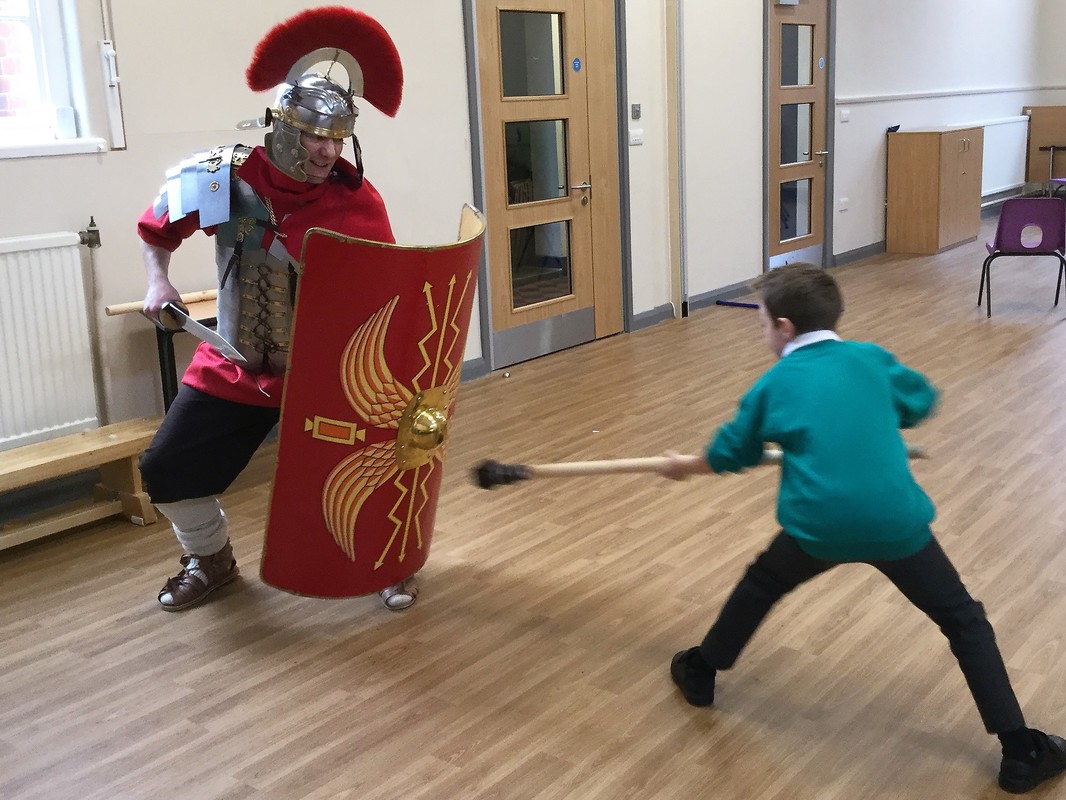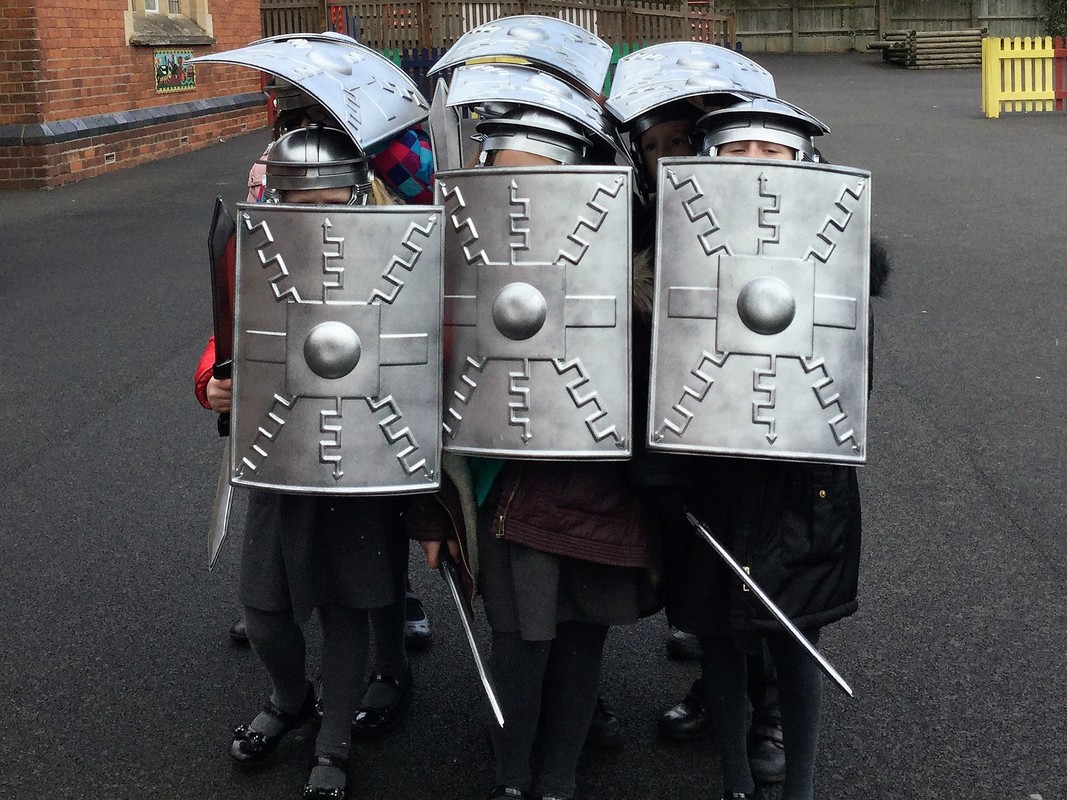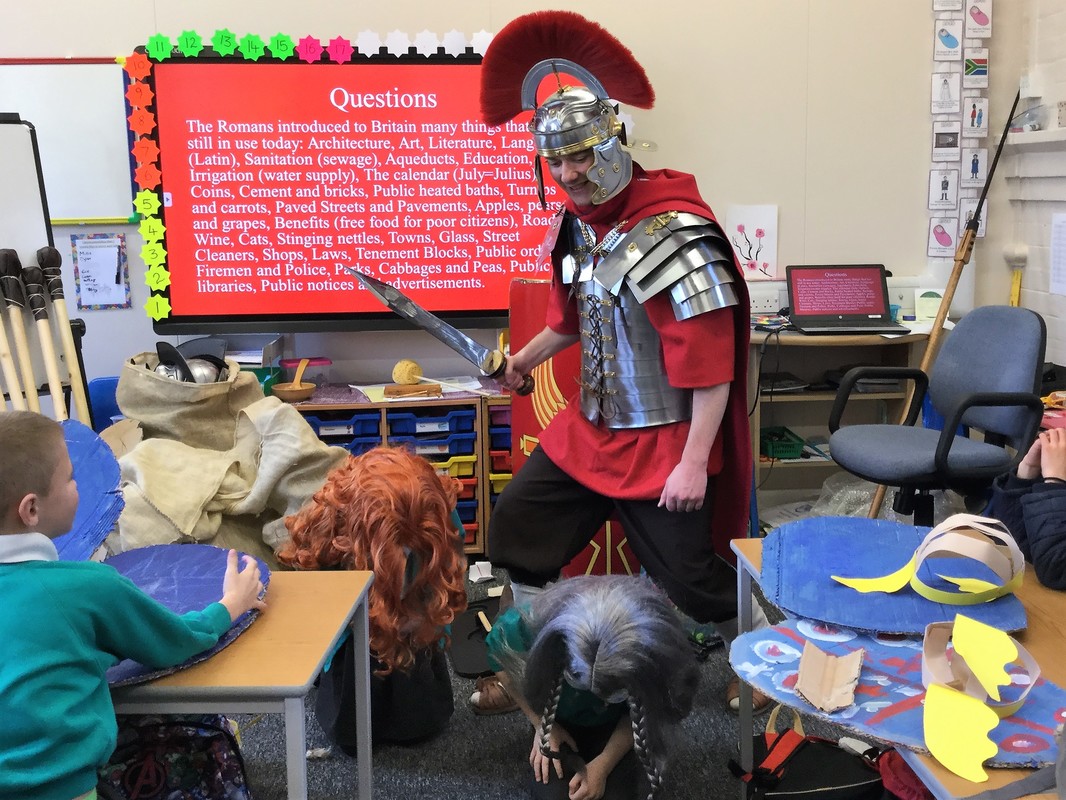How Roman Workshop meets the 2014 National Curriculum
The curriculum states that pupils should be taught about 'the Roman Empire and its impact on Britain'.
Roman Workshop has followed the guidance set-out under the non-statutory teaching and so the following is covered in the day's workshop:
All this and much more, makes the day a truly memorable one, and helps embed the learning far better than any normal history lesson!
With workshops of more than 30 children, teachers will receive a briefing on how to run a couple of the sessions whilst another group is taking part in battle training with Centurion Agrippa. Both sessions come with an easy-to-use powerpoint which guides teachers through the sessions.
Download a copy of the 2014 History Curriculum below.
Roman Workshop has followed the guidance set-out under the non-statutory teaching and so the following is covered in the day's workshop:
- Julius Caesar's attempted invasion in 55-54 BC - The children learn about the timeline of the Roman invasions. Children then analyse the timeline to understand other key events such as the subsequent invasion and the construction of Hadrian's Wall. Children look into why the initial invasion was unsuccessful.
- The Roman Empire by AD 42 and the power of its army - The children explore how and why the Romans invaded again, and make conclusions about why they succeeded the second time around. The children find out about the battle tactics of both sides, and why the Romans were far superior.
- Successful invasion by Claudius and conquest, including Hadrian's Wall - The children explore how the conquest succeeded and why Emperor Hadrian felt the need to build a wall to keep out the Picts.
- British resistance, for example, Boudica - The children find out about the division of Britain, how it was made up of many Kingdoms and led by charismatic leaders such as Caratacus and Boudica. Two lucky children become Caratacus and Boudica and feel the weight of responsibility upon them, for their people and their land.
- 'Romanisation' of Britain: sites such as Caerwent and the impact of technology, culture and beliefs, including early Christianity - The children learn the extent of what the Romans did for us. The long list of advances in civilization will be an eye-opener for the children, as many things they take for granted today would not be here if it wasn't for the Romans. The children have a debate, as to whether Romanisation of Britain is good or bad for Britons.
- The children take part in re-enactments of the battles between the Romans and the Celts, wearing Roman legionary helmets and wielding Roman Gladius' and Scutum shields. The Celts wield Celtic shields and swords.
- Re-enactment of a battle with Centurion Agrippa shouting out orders to his legionnaires, representing the strict discipline required in the legions and the need for unit cohesion.
- Children play replica Roman board games!
- The children get to debate with each-other, as if they were Celts deciding upon the future of their people and of their lands. Should Rome be welcomed with open arms? Or should they be driven back into the sea from which they came?
- The children become archaeologists as they dig up real Roman artefacts from a soil tray, brush them and analyse them to try and figure out what they are. Artefacts were dug up from Norfolk and include an array of artefacts from Roman times onwards.
All this and much more, makes the day a truly memorable one, and helps embed the learning far better than any normal history lesson!
With workshops of more than 30 children, teachers will receive a briefing on how to run a couple of the sessions whilst another group is taking part in battle training with Centurion Agrippa. Both sessions come with an easy-to-use powerpoint which guides teachers through the sessions.
Download a copy of the 2014 History Curriculum below.
| primary_national_curriculum_-_history.pdf | |
| File Size: | 135 kb |
| File Type: | |



